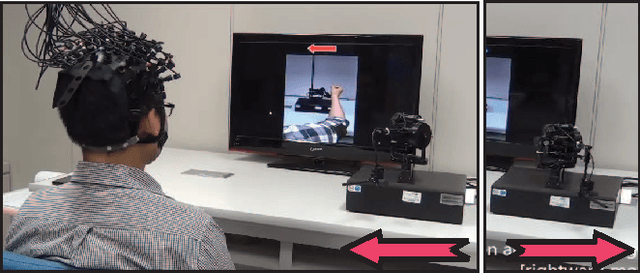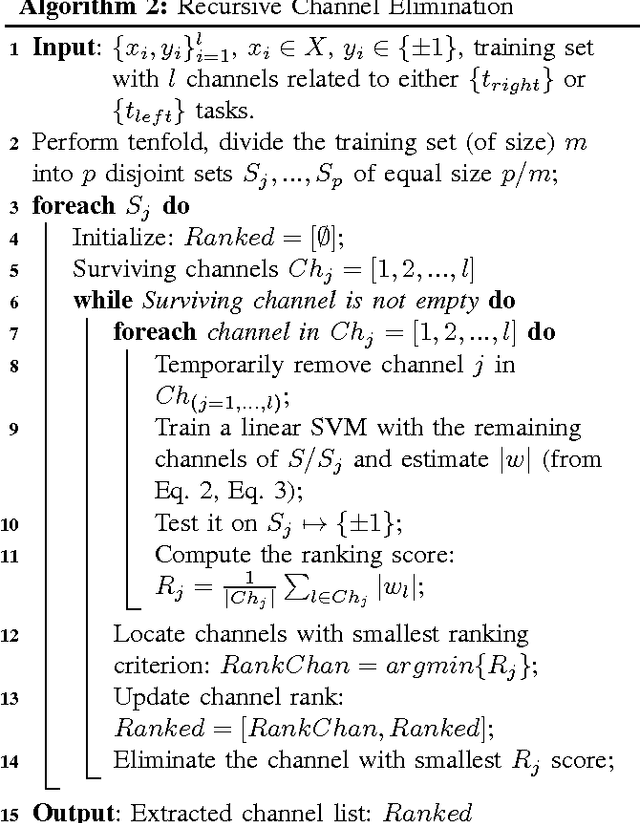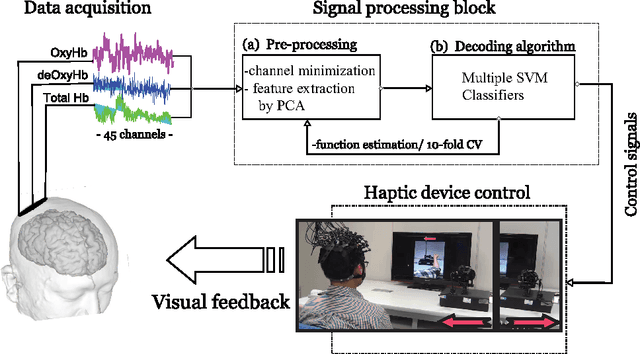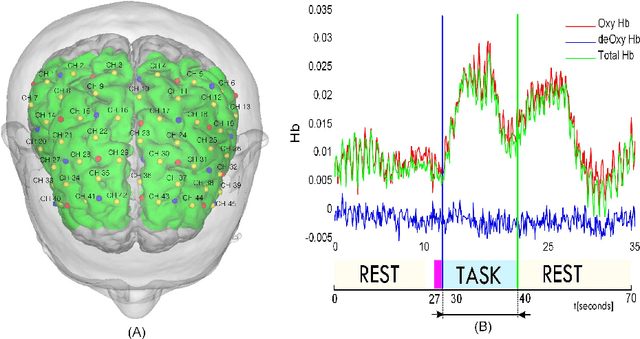A Study on Stroke Rehabilitation through Task-Oriented Control of a Haptic Device via Near-Infrared Spectroscopy-Based BCI
Paper and Code
Apr 14, 2014



This paper presents a study in task-oriented approach to stroke rehabilitation by controlling a haptic device via near-infrared spectroscopy-based brain-computer interface (BCI). The task is to command the haptic device to move in opposing directions of leftward and rightward movement. Our study consists of data acquisition, signal preprocessing, and classification. In data acquisition, we conduct experiments based on two different mental tasks: one on pure motor imagery, and another on combined motor imagery and action observation. The experiments were conducted in both offline and online modes. In the signal preprocessing, we use localization method to eliminate channels that are irrelevant to the mental task, as well as perform feature extraction for subsequent classification. We propose multiple support vector machine classifiers with a majority-voting scheme for improved classification results. And lastly, we present test results to demonstrate the efficacy of our proposed approach to possible stroke rehabilitation practice.
 Add to Chrome
Add to Chrome Add to Firefox
Add to Firefox Add to Edge
Add to Edge